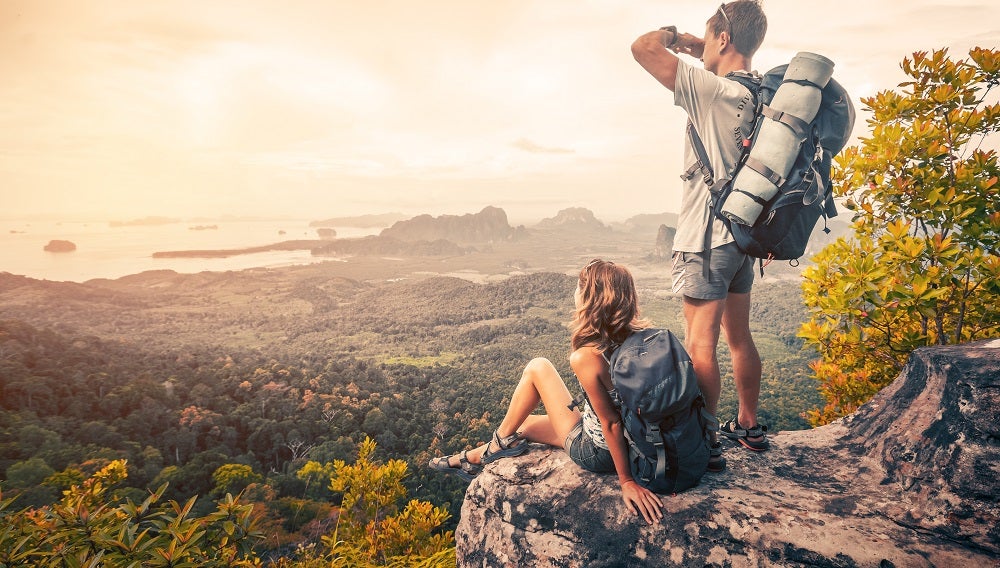
Our Editors independently research, test, and rate what we feel are the best products. We use affiliate links and may receive a small commission on purchases.
Getting started hiking can be a little bit confusing. Some will tell you that hiking involves a tent and overnight trips. Others consider that exclusive to backpacking.
Still other hikers will face the challenge of living in areas which are urban. In these cases, you’ll have to plan special weekend trips to get out hiking in the wilderness.
Even with all these common barriers out of our way, hikers face questions such as, “what about bears!?” Then there’s the classic problem of what kind of food to carry, how to deal with rain, and how to start a fire.
Many of these skills are very foreign to new hikers or those looking to get started. Not to worry, however, because we’re going to teach you how to get started hiking – the easy way.
Preparing For Your Hiking Trip
Properly planning and preparing for your next hiking trip is the binding which holds your experience together. Experienced hikers start by choosing a destination and then assessing the requisite needs and skills for their trip. Here’s how we’ll tackle this:
Choosing a Location
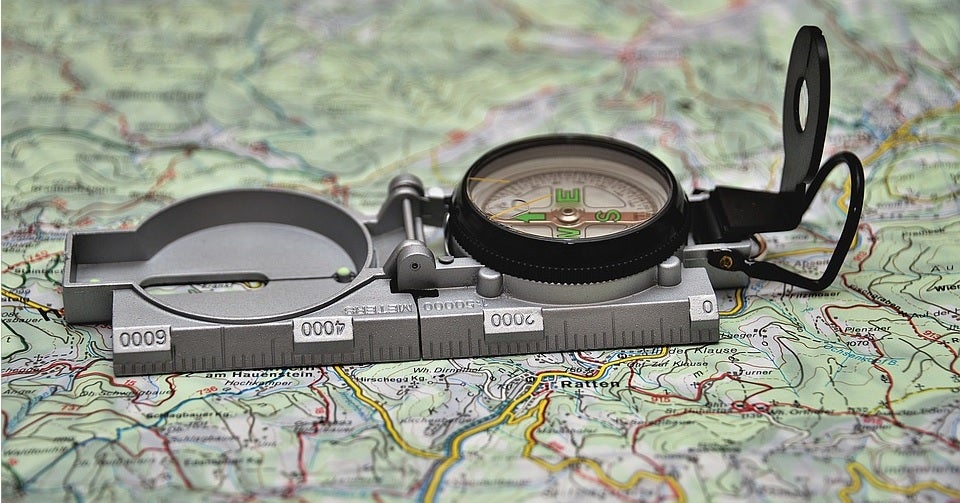
When just getting started hiking it’s important to choose a destination that seems fun to you. However, keep your expectations reasonable. Avoid areas that might present difficulties such as desert locations or particularly remote areas. Consider choosing an area where the terrain is relatively flat, to avoid the difficulties that come with major elevation gains.
More experienced hikers may choose to hike in and camp at their destinations. I would recommend leaving this for later. Start by just taking some day hikes, and avoid adding the difficulty of camping on top of your beginning trips.
Equipment and Skills
Some hikers have the luxury of living near great trails and temperate weather. Others may live in desert climates or areas where rain is a part of daily life. Consider where you’ll be hiking and decide if you’ll need any unique equipment or skills to be safe and enjoy your hike.
Many hikers and backpackers opt to take a wilderness medicine course. Taking a wilderness first aid or wilderness first responder course will definitely improve your level of confidence. I highly recommend taking a wilderness medicine course from SOLO or NOLS at some point during your hiking career.
For equipment, consider taking some kind of water purification on every trip. If you’re entering a particularly arid location, you may want to take extra water. I highly recommend Platy bottles for water. Where you use them as your primary water bottle, or a backup extra. Of course, if you think you need more water, using a hydration pack is a good option. Plan ahead!
Check the Weather
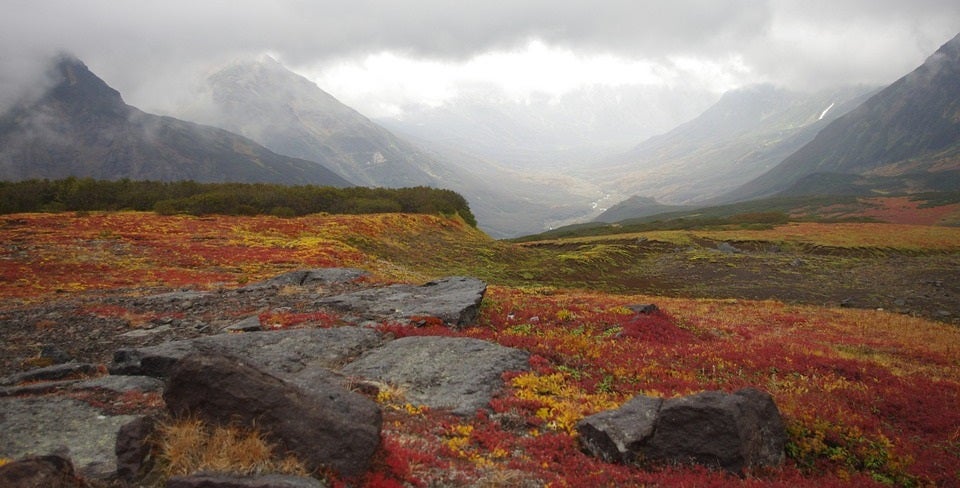
This doesn’t mean looking to see if it’ll be raining when you’re hiking. Reasonable changes in weather are an integral part of camping outdoors and should be expected so make sure you’re prepared. Being prepared for inclement weather means carrying camping essentials such as rain gear and knowing how to keep your sleeping bag safe and dry so you don’t end up with hypothermia!
What’s more important than checking the daily weather is getting a feel for the overall average conditions in the area you’ll be hiking in. What’s the average high and low temperature for the area at this time of year? Is the climate cold and wet or hot and dry?
These considerations will have a huge impact on your final decision of what hiking gear to bring and how many and which layers of clothing to pack. Having a functional understanding of the weather in the area you’ll be camping in, as well as what that means for your decisions is critical to enjoying a safe hiking trip.
Check with Local Authorities
You’ll need the best maps, up to date information, and local insight before taking your hiking trip. If you have any unanswered questions about seasonal considerations such as weather, road closures, or regulations, it’s best to call the local park rangers or outfitters in the area.
You’ll be surprised what kind of great tips and information you’ll get just by making a phone call to someone who knows the area!
Often, I’ve found that maps or articles from other hikers just don’t cut it. Many trails, despite being known to me, simply lack good information. In these cases, there’s only one solution.
Go straight to the source! This is when it becomes critical to call the local park ranger’s office or the nearest outfitter. Even if they don’t have the answers, they’ll know who to refer you to!
Avoid: Buying Gear from One Store
Shiny new brightly colored backpack, one of any number of ThermaRest pads poking out from under the pack, and an absurdly expensive Mountain Hardware rain jacket haphazardly sticking out of the mesh pocket on the back.
This hiker is rolling around with two Nalgene bottles covered in duct tape with not a scratch on them. I am, of course, describing the hiker who went to the nearest store and bought every piece of gear the salesman recommended.
Now, don’t take this the wrong way, depending on your needs there is plenty of great gear at major retailers and, in fact, their in-house brands can be really great!
Do your research first and decide what options are really out there; there is so much more than just Patagonia, North Face, and Marmot.
Try some cool cottage manufacturers like zPacks, Gossamer Gear, Mountain Laurel Designs, Trail Designs, Mont Bell, and Granite Gear. I get a lot of my personal gear from these companies.
Pro Tip: I buy a few select items from big companies like Marmot and Patagonia for specific purposes – just be sure to choose your equipment based on research, not brand.
Make Your Own Backpacking Meals
Premade backpacking meals are expensive, heavy, bulky, and often lack creativity or good nutritional value. Many hikers find that packing their own meals is preferable and it’s certainly the only way you’re going to get meals customized for your tastes. For short day hikes you can even get away with just tossing some food from your pantry into the backpack.
When doing loner trips or camping overnight, you’ll need something else. It’s easy to find great, high calorie options by doing something called freezer bag cooking.
This method of backpacking cooking means leaving the pot at home (that’s right no cooking pot). Place premade meals in Ziploc bags and just add a cup of boiling water. Once the meal has hydrated it’s time to eat up.
One of my favorite freezer bag meals is minute rice, dehydrated refried beans, taco seasoning, and crushed Fritos. I’m sure there are many variations of this meal, but I’ll share my method with you.
Rehydrated the rice, beans, and taco seasoning together in a bag. Once hydrated, stir well and crush Fritos chips over the top for a delicious meal everyone will be jealous of.
For more meals, check out this great resource on homemade freezer bag meals! Of course you can really make just about any meal you want as long as you can find dehydrated ingredients.
Choosing Hiking Gear
Backpack
While you can get started with just about anything, I’ll set you in the right direction for finding your first hiking backpack. Keep in mind that factors such as budget, purpose, and preference play a huge role here. I’d still recommend minimizing weight where possible and look for only the essentials. Bells and whistles need not apply.
Something like the Sea to Summit Ultra-Sil Dry Day Pack combine extreme lightweight, waterproofness, and function into one tiny package. You’ll be blown away that a pack so small and light can handle your hiking needs for a day.
Bulkier, heavier, or more rough loads you might consider a backpack with a built-in hip belt and more durable construction. While it’s going to weigh more than the Ultra-Sil Dry Pack, the Mountain Hardwear Scrambler RT 20 Outdry Backpack.
I’ve used Mountain Hardwear daypacks in the past and I love their quality, durability, and overall functionality. This bag will be hard to replace as you learn to rely on it over the years.
Footwear
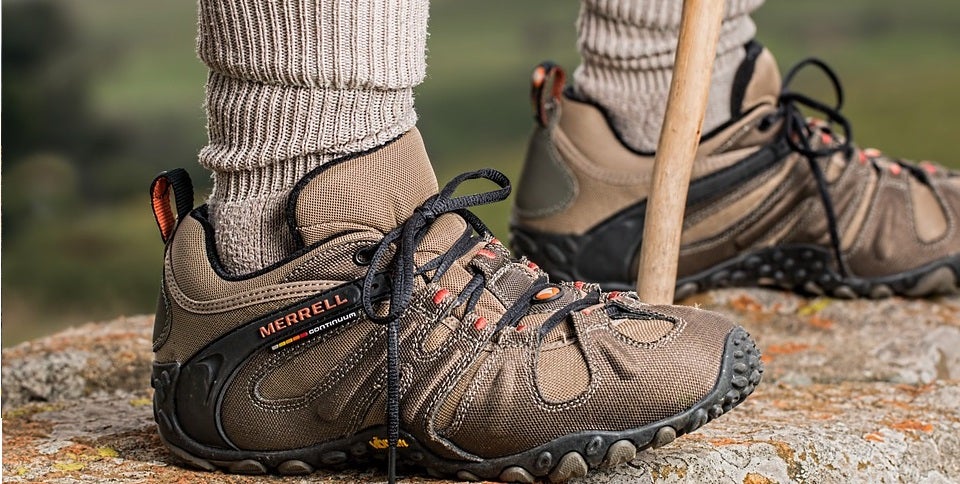
What you wear on your feet is important, lighter is better! Normally I recommend hiking shoes over boots because rarely do you really need the extra protection of boots. Hiking shoes for men and women are pretty much the same other than styling and sizing.
I prefer synthetic mesh shoes, water proof is usually not necessary because water will just come in over the cuff of the shoes. Boots do offer some extra benefits of ankle support and more protection from water.
Modern hiking boots for men and women are not just the bulky Timberland boots that come to mind. Mostly made from leather and synthetic materials are lighter and more comfortable than their cousins of old.
Also a good pair of hiking socks will make a huge difference in foot comfort. Look for hiking socks made with Merino wool. It is good at keeping your feet dry and resisting bacterial growth.
Clothing
There is such a wide variety of hiking pants available for men and women, it can very confusing whats really important.
One feature I consider important is convertibility, meaning hiking pants where the legs unzip to create shorts. These are perfect for summer hiking where its cool in the morning and warms up in the afternoon. This saves you having to carry both with you.
For hiking shirts I would recommend a “dry” shirt that offers UV protection like the Columbia “Omni-Shade” line of shirts. Whatever you decide to do with make sure its loose fitting and breathable to keep you dry and cool. I like long sleeve shirts where the sleeves can be rolled up and secured in place and a couple of front pockets can be useful but I rarely keep much in them.
Other Supplies and Gear
Medical Supplies
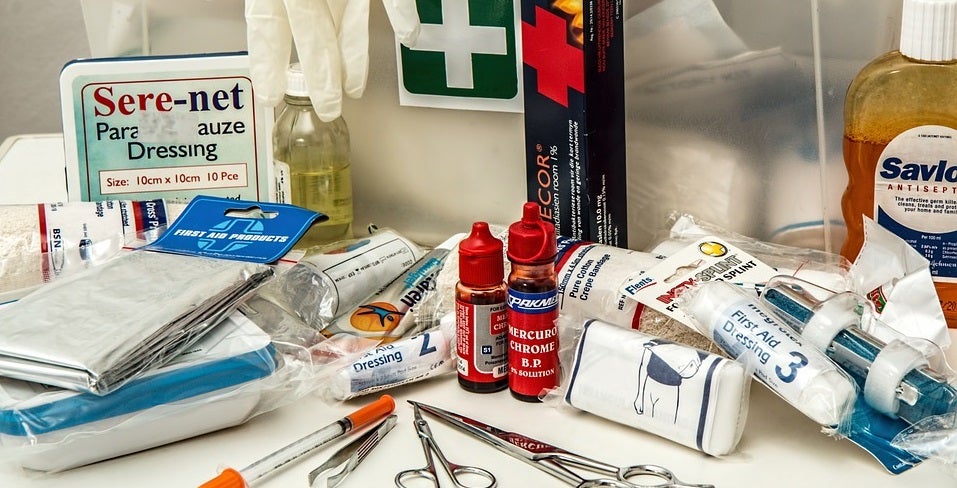
As I mentioned before, taking an emergency medicine course can be a huge benefit to your safety and confidence in the wilderness. You’ll quickly find that many hikers have wildly varying opinions on what it takes to build a medical kit.
I encourage you to cut through the opinions and find your own facts by getting a factual education. However, this may not be possible at first.
Some of the most important items in my medical kit are things like moleskin, 4×4 gauze pads, ibuprofen, and antiseptic ointment.
I also include in there some hand salve for applying to dry skin and macerated feet, super glue for the nastiest of emergencies, and a few other basic supplies. I don’t recommend that everyone carry these exact items but it’s a place to start thinking about what’s important to your needs.
If you’re looking for a premade medical kit you can try the Adventure Medical Kits Ultralight and Watertight Medical Kit. I like this kit because it avoids unnecessary items or more items than is practically necessary. It’s imperative that you go through your medical kit before every trip. Know what’s in it and how to use it!
Headlamps
Taking a headlamp is not optional in my opinion. Any time there’s a chance of hiking or camping in the dark you’ll want a headlamp with you. We’ll take a look at my two favorite options. One is an ultralight pick for those lightweight purists, and the other is a powerhouse of light output I use when guiding trips.
If you want a headlamp that weighs practically nothing and will fit into the tiniest bag without you even having to remember that it’s there, this one is for you. Petzl E+LITE Emergency Headlamp weighs just 27 grams!
It’s tiny, light, and puts out enough light to help around camp or get you back to the car. It’s not a great choice if you’re planning to use it for hiking at night, though. It just doesn’t put out enough light.
For those looking to do work at night time, hike late into the dark, or work around camp when the night has settled you may want something with greater illumination output.
I’ve been using an older model of the Black Diamond Storm Head Lamp for years when I need tons of light output and I love it! With many modes of function and adjustable brightness it’s the perfect choice for me when I need utility and flexibility. This is the headlamp I recommend to all new hikers.
Rain Gear
We’ve mentioned rain gear a few times so far, so let’s get into it. During the heat of summer in warmer climates where you might be hiking just for an afternoon, rain gear can be completely unnecessary.
When we really need rain gear is to help protect us from the dangers of the cooling effects of wind and water on the body. Any time the combination of wind and water might cause dangerous cooling effects on the body, rain gear is mandatory!
My current personal choice for a rain jacket is the Marmot Essence jacket. While there are a few other jackets on the market now that are similar, at the time I bought mine it was among the absolute lightest and most packable rain jackets on the market.
I still love it and recommend it to others because of how well constructed and how well thought out the design is. It’s beaten any other rain jacket I’ve used hands down.
For those on a budget, the Frogg Toggs rain gear will set you back a fraction of the price and you’ll get a jacket AND rain pants! It’s impossible to argue with the value provided by such an affordable product.
Many hikers swear by the Frogg Togg rain gear and I have to say, it’s quite convenient that it can be repaired effectively with just duct tape.
Navigation
Before you head out you should study the area you plan on going to become familiar with elevation changes and possible landmarks. Getting a topographical map from the US Geologic Service is always a good idea. Nothing like having an actual map and I recommend a compass.
Nothing having something that does not depend on batteries. With that said, modern navigation equipment like GPS hiking watches or a larger handheld GPS unit with mapping capabilities are certainly convenient and I would recommend them.
Hiking Poles
Many hikers consider hiking poles for old people only. I will tell you that they are useful for everyone of any age. They are especially useful when climbing steeper inclines and especially when descending. They have been proven to help reduce fatigue and muscle strains. A pair of lightweight hiking binoculars can be useful for not only sightseeing but for finding landmarks.
If you are going for hiking trips of longer than a few days, see my backpacking guide that discusses going out into the wilderness for longer periods of time.
I hope this beginners guide to hiking was helpful.. If you want to comment or recommend a tip or consideration I didn’t include, please use my contact form to get in touch.
Have fun and be safe out there!
